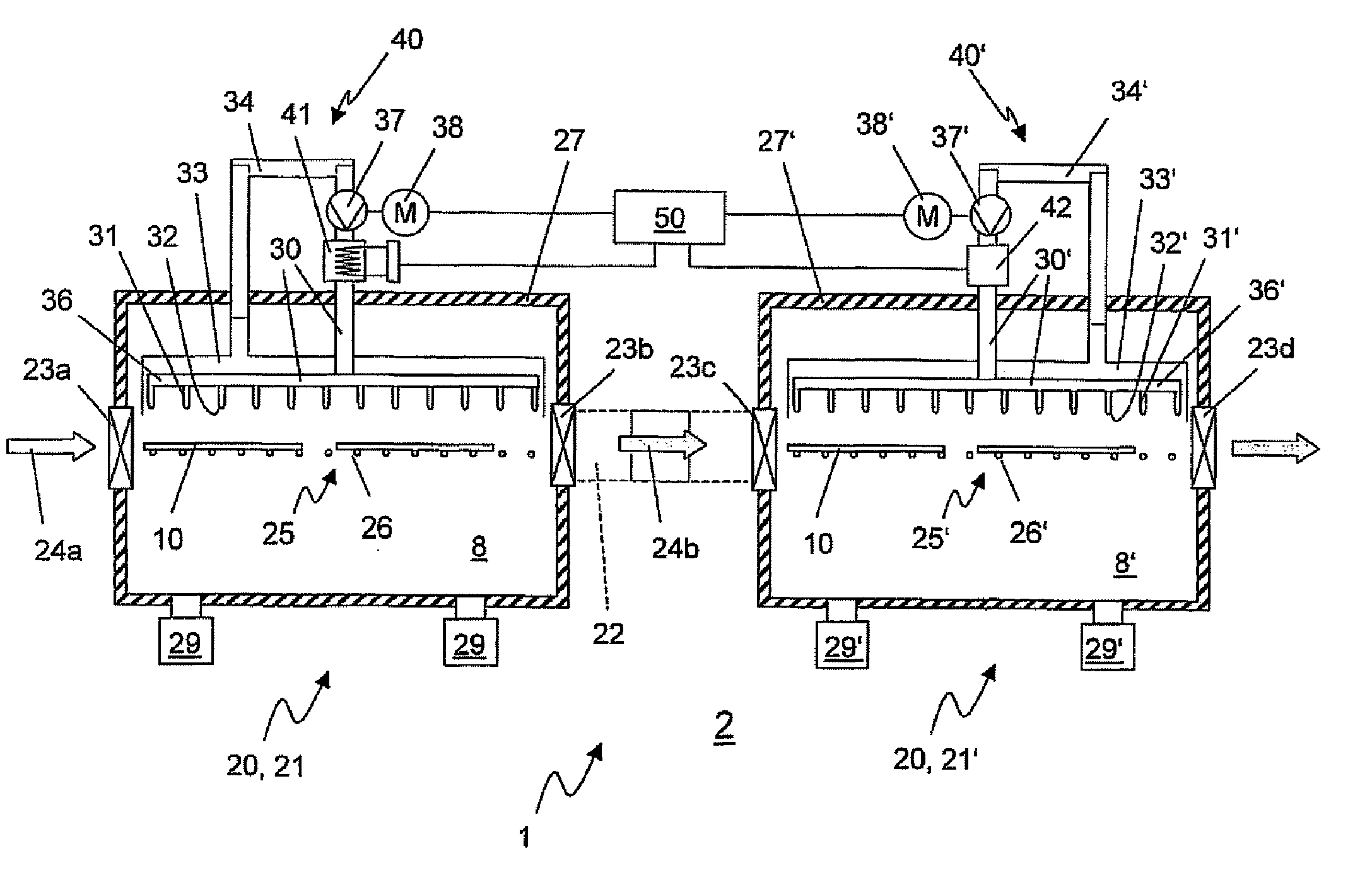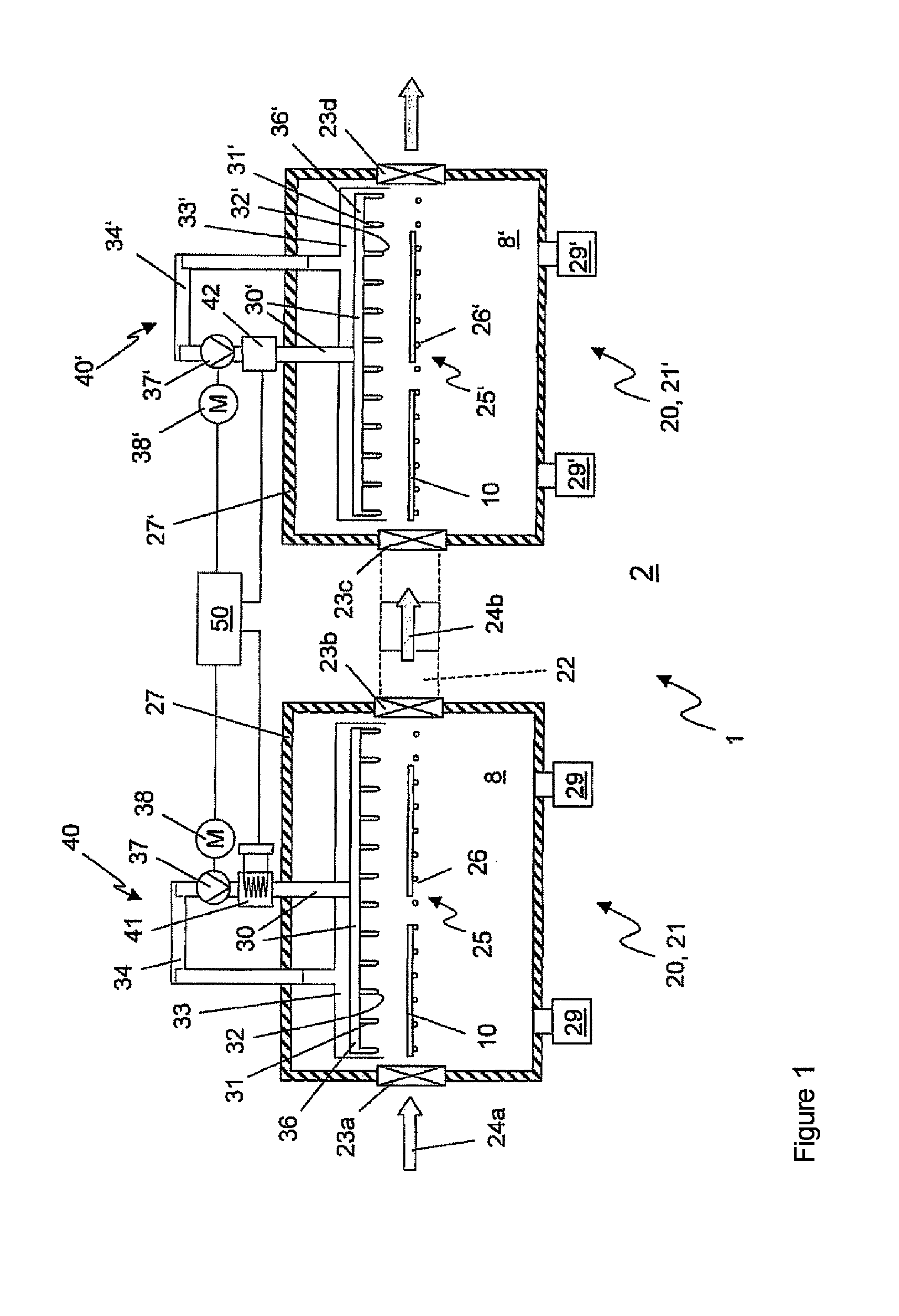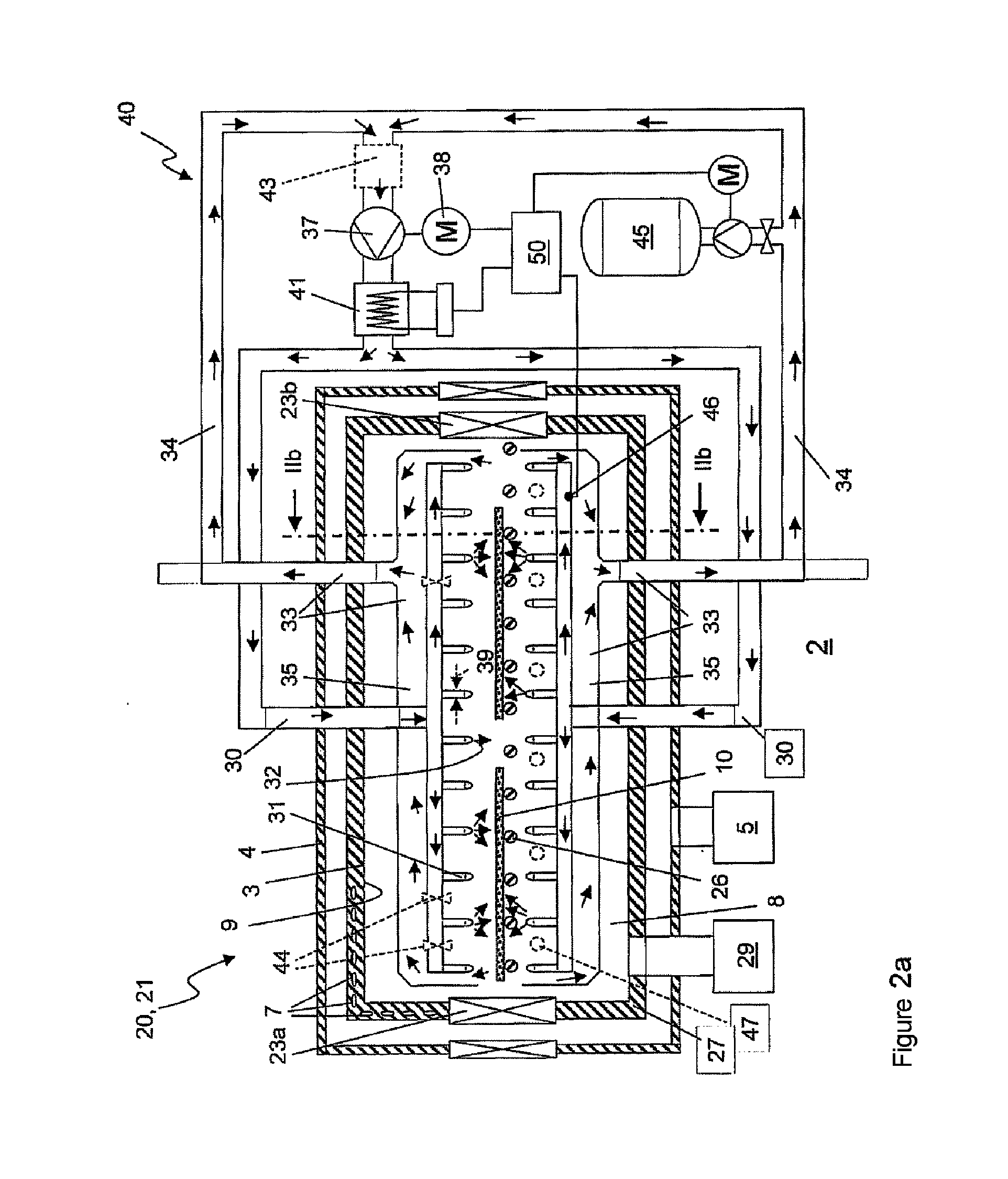Device and treatment chamber for thermally treating substrates
a technology for thermal processing and treatment chambers, which is applied in the direction of discharged materials, lighting and heating apparatus, furnace components, etc., can solve the problems of aggravated problems, damage to the coating (tears, inner stresses, etc.) and/or the substrate, and achieve the effect of reducing the heating or cooling power required to maintain a desired temperature, reducing the thermal load on the surroundings, and fast heating or cooling of the chamber interior
- Summary
- Abstract
- Description
- Claims
- Application Information
AI Technical Summary
Benefits of technology
Problems solved by technology
Method used
Image
Examples
Embodiment Construction
[0018]In the drawings, mutually corresponding elements are denoted by the same reference sign. The drawings illustrate a schematic exemplary embodiment and do not reproduce any specific parameters of the invention. Furthermore, the drawings only serve to explain an advantageous embodiment of the invention and should not be interpreted as restricting the scope of protection for the invention.
[0019]FIG. 1 shows a schematic sectional view of a device 1 for thermal processing of substrates 10. Here, the term “substrate” should be understood to be any object that needs to be processed or coated and / or already has been coated, that is to say both a (possibly pre-treated) substrate material as such and a substrate material with single or multiple coats. In the exemplary embodiment shown in the figures, the substrate is an areal workpiece made of glass, the surface area of which can range between a few square centimetres and a few square metres. “Thermal processing” should be understood to ...
PUM
| Property | Measurement | Unit |
|---|---|---|
| Temperature | aaaaa | aaaaa |
| Power | aaaaa | aaaaa |
| Flow rate | aaaaa | aaaaa |
Abstract
Description
Claims
Application Information
 Login to View More
Login to View More - R&D
- Intellectual Property
- Life Sciences
- Materials
- Tech Scout
- Unparalleled Data Quality
- Higher Quality Content
- 60% Fewer Hallucinations
Browse by: Latest US Patents, China's latest patents, Technical Efficacy Thesaurus, Application Domain, Technology Topic, Popular Technical Reports.
© 2025 PatSnap. All rights reserved.Legal|Privacy policy|Modern Slavery Act Transparency Statement|Sitemap|About US| Contact US: help@patsnap.com



